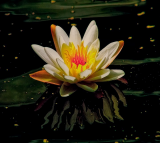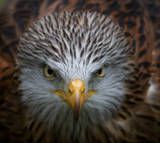- Forum
- General Discussion | Introductions | Off Topic Forum
- Photography General Discussion
- Photographing birds a lot tougher then it looks!!
Photographing birds a lot tougher then it looks!!
Post #101379
-

- Rigby
- New Kid On The Block
-
- nikon d5000
- Followers: 0
- Posts: 34
-
Points:
0
-

- robbie
- Apprentice
-
- D200,665nm D200,720NM D70,D7000
- Followers: 72
- Posts: 2768
-
Points:
25
Post #101427
Man you cracking me up:lol:QZG Dan wrote: Yesterday I went out to photograph some birds in the woods, but when I got to the spot where the birds were, they all flew away. So I sat there, hoping they would come back, no chance. So, anyone that reguarly photographs birds what is your secret!! I cant seem to ever get close enough without scaring them off.
Sorry couldn`t help it!!
You need at least a 300mm lens,you have to sneak up on the birds out of their sight,try and get some shots as you aproach even if not ideal.Use the trees as shield to get close.That`s the easy part,camera setup is important,I uses this ......
Aperture Priority because you know what you want,no program mode..
ISO 400 @F8...EV compensation...minus ev to prevent blowing out the 'whites',plus ev to open the shadows but be careful of using the 'plus ev' in sunshine on dark birds.
F8 can be bigger depending on the light and whether the bird is flying.
Continious Focus is a must because even if the bird is still,a slight movement can throw off the focus when you are focusing on the eye,look for the catchlights to appear and blast away.
In difficult lighting use 'bracketing' and shoot in Raw.
Hope this helps.
-

- robbie
- Apprentice
-
- D200,665nm D200,720NM D70,D7000
- Followers: 72
- Posts: 2768
-
Points:
25
Post #101429
You too giving the man JOKES!!Not very nice:rofl:Rigby wrote: Yup, it's not as easy as point and shoot.
Get up really early in the morning, when the birds are out feeding. Be very quiet. Be patient. Put out bird seed if you wish.
I started mine before you!
-

- TheNissanMan
- Moderator
-
- Canon 7D
- Followers: 34
- Posts: 826
-
Points:
135
Post #101487
They've got so bad that in the hot weather they'll get my father to shower them with the hose to cool them down and unfortunately I'm not joking!
-

- Baydream
- Moderator
-
- Canoni/60D/70D/5DmkIII
- Followers: 388
- Posts: 11185
-
Points:
7280
Post #101541
Shoot, learn and share. It will make you a better photographer.
fineartamerica.com/profiles/john-g-schickler.html?tab=artwork
-

- Fitch
- Snapobsessed
-
- Nikon D800
- Followers: 87
- Posts: 356
-
Points:
2990
Post #101847
Baydream wrote: I set my camera on the tripod and pre-focus on a feeder using aperture priority. I then use a radio remote release (ZapShot for Canon in my case) and move well away from the feeder (even inside). After a few clicks, the birds get used to the shutter noise. I have used the kit lens, my 50 prime and my 70-300 (for more "modest" birds). I have finches, chickadees, juncos, wrens, hummingbirds and more.
Love it, did you set some bird feed on your camera?
-

- The Time Capturer
- Master of the Lens
-
- Canon Rebel XSi D-SLR and Fujifilm FinePix HS10
- Followers: 90
- Posts: 1641
-
Points:
237
Post #101851
Fitch wrote:
Baydream wrote: I set my camera on the tripod and pre-focus on a feeder using aperture priority. I then use a radio remote release (ZapShot for Canon in my case) and move well away from the feeder (even inside). After a few clicks, the birds get used to the shutter noise. I have used the kit lens, my 50 prime and my 70-300 (for more "modest" birds). I have finches, chickadees, juncos, wrens, hummingbirds and more.
Love it, did you set some bird feed on your camera?
I love shots like these. The coolest one was from National Geographic, I think. The bird was standing on the lens hood, looking down into the lens.
Great capture, Baydream...
Sure, practice makes perfect but, unless you learn from your mistakes, you are only perfecting your ability to fail.
-

- Vahrenkamp
- Master of the Lens
-
- Nikon D800
- Followers: 287
- Posts: 1605
-
Points:
7635
Post #101859
-

- The Time Capturer
- Master of the Lens
-
- Canon Rebel XSi D-SLR and Fujifilm FinePix HS10
- Followers: 90
- Posts: 1641
-
Points:
237
Post #101861
Sure, practice makes perfect but, unless you learn from your mistakes, you are only perfecting your ability to fail.
-

- The Time Capturer
- Master of the Lens
-
- Canon Rebel XSi D-SLR and Fujifilm FinePix HS10
- Followers: 90
- Posts: 1641
-
Points:
237
Post #101875
Vahrenkamp wrote: The bird looking down the lens would be a fun photo to see if you have it
I can't find the image I'm thinking of. I saw it many years ago so it may have been in a magazine and hasn't made it to the net. I did find a similar one though, but it's not as good as the one I remember:
www.insteadoftv.com/83/christmas-bird-count/
Sure, practice makes perfect but, unless you learn from your mistakes, you are only perfecting your ability to fail.
-

- effron
- Newbie
- Followers: 1623
-
Points:
129640
-

- Baydream
- Moderator
-
- Canoni/60D/70D/5DmkIII
- Followers: 388
- Posts: 11185
-
Points:
7280
Post #102013
No. The Chickadees just used the camera and tripod as a perch to watch the feeders.Fitch wrote:
Baydream wrote: I set my camera on the tripod and pre-focus on a feeder using aperture priority. I then use a radio remote release (ZapShot for Canon in my case) and move well away from the feeder (even inside). After a few clicks, the birds get used to the shutter noise. I have used the kit lens, my 50 prime and my 70-300 (for more "modest" birds). I have finches, chickadees, juncos, wrens, hummingbirds and more.
Love it, did you set some bird feed on your camera?
Shoot, learn and share. It will make you a better photographer.
fineartamerica.com/profiles/john-g-schickler.html?tab=artwork
-

- Baydream
- Moderator
-
- Canoni/60D/70D/5DmkIII
- Followers: 388
- Posts: 11185
-
Points:
7280
Post #102015
Shoot, learn and share. It will make you a better photographer.
fineartamerica.com/profiles/john-g-schickler.html?tab=artwork
-

- ShadowWalker
- Photography Hooked
-
- Sony A7s III and D700
- Followers: 131
- Posts: 662
-
Points:
1646
- Forum
- General Discussion | Introductions | Off Topic Forum
- Photography General Discussion
- Photographing birds a lot tougher then it looks!!
Latest Reviews
The Olympus Pen E-P7 is an affordable micro four thirds mirrorless camera with 4K video capabilities, a 20.3MP sensor, and 121 focus points, making it a solid entry-level camera for beginners.
The Panasonic G9 II is a 25.2-megapixel micro four thirds camera with numerous features that make it punch out of its weight class, like 779 AF points, 5.8K video, and weather sealing.
The Fujifilm XT5 is a 40MP mirrorless camera capable of 6.2K video at 30p. With those specs, it’s an ideal choice for photographers needing a camera to pull double duty for imaging and video.
The Canon EOS R100 is an entry-level mirrorless camera introduced in 2023. But just because it’s an entry-level camera doesn’t mean it’s a bare-bones camera. Find out why in this review!
Forum Top Posters
-
1Scotty 9 posts
-
2Roman Omell 4 posts
-
3Ruby Grace 4 posts
-
4TCav 4 posts
-
5Razky 4 posts
-
6Roger Lang 3 posts
-
7Nefarious 3 posts
-
8CharleyL 3 posts
-
9ShutterPal 3 posts
-
10Pat White 3 posts
Latest Articles
Upgrade your kit in 2024 with the best intermediate camera on the market! The question is, what camera fits the bill? We’ve got three top options for you to choose from in this buyer’s guide.
The best photography jobs right now are a mix of tried-and-true gigs like wedding photography and new jobs highlighting AI’s capabilities, travel, and videography.
The Olympus Pen E-P7 is an affordable micro four thirds mirrorless camera with 4K video capabilities, a 20.3MP sensor, and 121 focus points, making it a solid entry-level camera for beginners.
Starting a photography business is one thing; sustaining your business over a long period of time is another. Use the tips in this professional photography guide to build something with longevity!
The Panasonic G9 II is a 25.2-megapixel micro four thirds camera with numerous features that make it punch out of its weight class, like 779 AF points, 5.8K video, and weather sealing.
Cinematic photography is an interesting genre that combines photographic and videographic skills along with effective storytelling techniques. The result? Highly impactful images!
Newborn photography requires skill, the right gear, and a lot of patience. This beginner’s guide discusses critical topics that will help you be more prepared for before, during, and after the shoot.
To fill the frame means to expand the footprint of the subject in your shot. Get in close, zoom in, crop the image, or use other techniques to bring the subject to the forefront.



















